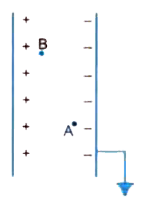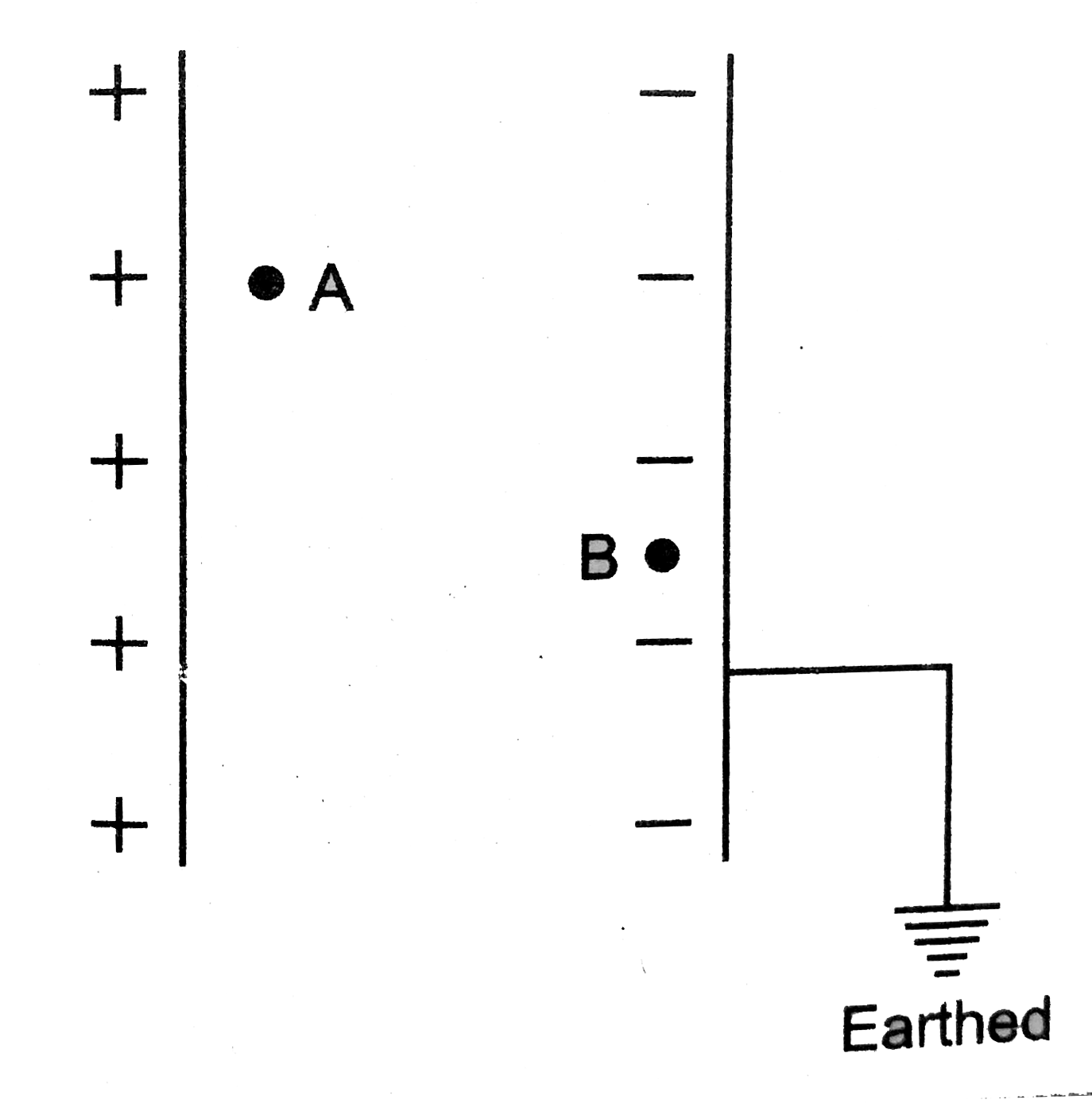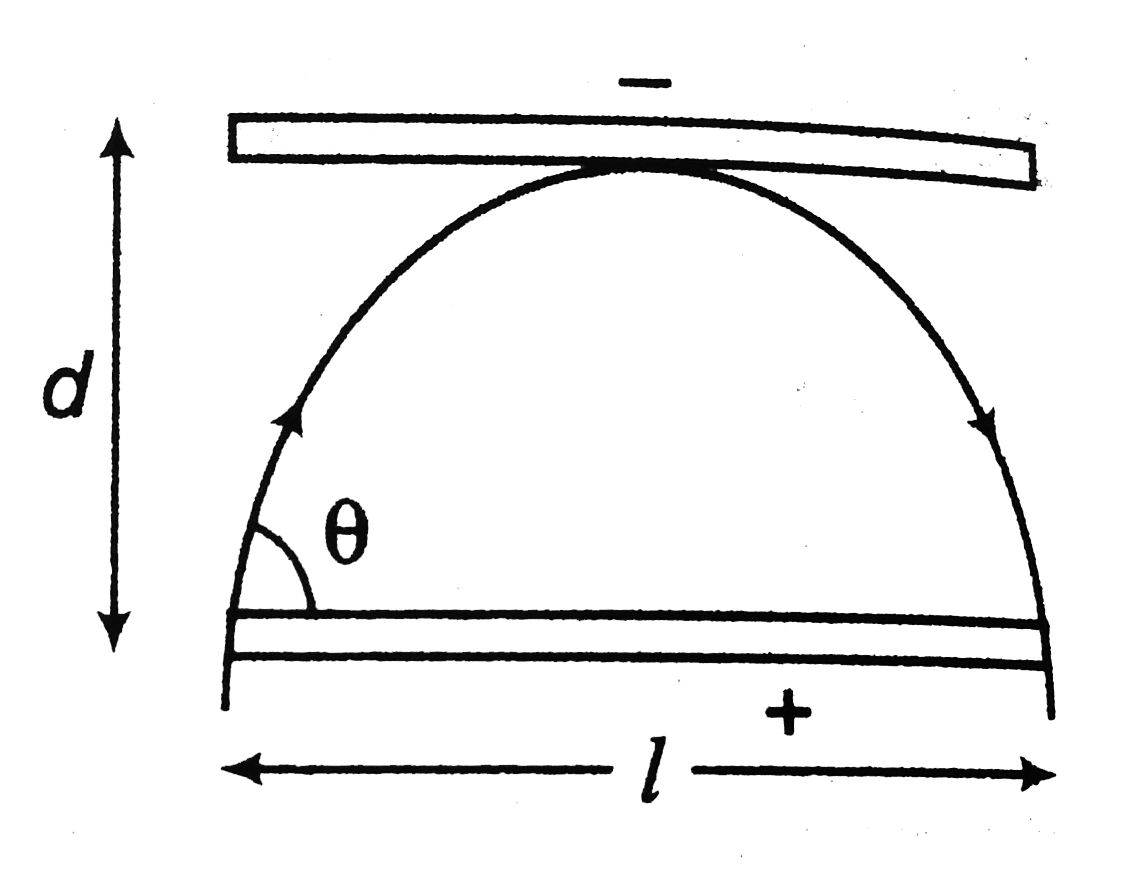An electron passes between two parallel plate of a capacitor as shown in the diagram. The electron enters the plate at t=0 and it comes out of the plates at time t=T. The electron hits the screen at A, as shown. Now a time varying potential difference V is applied between the plates, as shown in the graph. (Neglect the gravity). The point where the electron now will strike (as compared to point A) will be

deflected up
deflected down
deflected up then down
deflected down then up
The correct Answer is:A
Step by step video, text & image solution for An electron passes between two parallel plate of a capacitor as shown in the diagram. The electron enters the plate at t=0 and it comes out of the plates at time t=T. The electron hits the screen at A, as shown. Now a time varying potential difference V is applied between the plates, as shown in the graph. (Neglect the gravity). The point where the electron now will strike (as compared to point A) will be by Physics experts to help you in doubts & scoring excellent marks in Class 11 exams.
Topper's Solved these Questions
Similar Questions
In a parallel plate capacitor the potential difference of 100 V is manitianed between the plates. If distance between the plates be 5mm, what will be the electric field at points A and B ?
 View Solution
View SolutionIn a parallel plate capacitor shown in Fig, the potential difference of 100V is maintained between the plates. If distances between the plaes is 5mm, what will be the electric field at points A and B ?
 View Solution
View Solution
Knowledge Check
- Question 1 - Select One
When potential difference of 9V is applied between the two plates, electron accelerate between the plates with velocity
A1.8×104m/sB1.8×106m/sC1.8×10−4m/sD1.8×10−6m/s - Question 2 - Select One
An electron enters the region between the plates of a parallel plate capacitor at an angle θ to the plates. The plate width is l, the plate separation is d. The electron follows the path shown just missing the upper plate. Neglect gravity. Then,
 Atanθ=2dlBtanθ=4dlCtanθ=8dlDThe data given is insufficient to find a relation between d, l and θ
Atanθ=2dlBtanθ=4dlCtanθ=8dlDThe data given is insufficient to find a relation between d, l and θ - Question 3 - Select One
A parallel plate air capacitor has capacity C distance of separation between plates is d and potential difference V is applied between the plates force of attraction between the plates of the parallel plate air capacitor is
AC2V22d2BC2V22dCCV22dDCV2d
A parallel plate capacitor having plate area A and separation between the plates d is charged to potential V.The energy stored in capacitor is ....???
View SolutionIf an electron enters a space between the plates of a parallel plate capacitor at an angle θ1 with the plates and leaves at an angle θ2 to the plates, the ratio of its kinetic energy while entering the capacitor to that while leaving will be
View SolutionIn a parallel plate capacitor, the distance between the plates is d and potential difference across the plate is V. Energy stored per unit volume between the plates of capacitor is
View SolutionThe force between the plates of a parallel plate capacitor of capacitance C and distance of separation of the plates d with a potential difference V between the plates, is.
View SolutionThe force between the plates of a parallel plate capacitor of capacitance C and distance of separation of the plates d with a potential difference V between the plates, is.
View Solution
